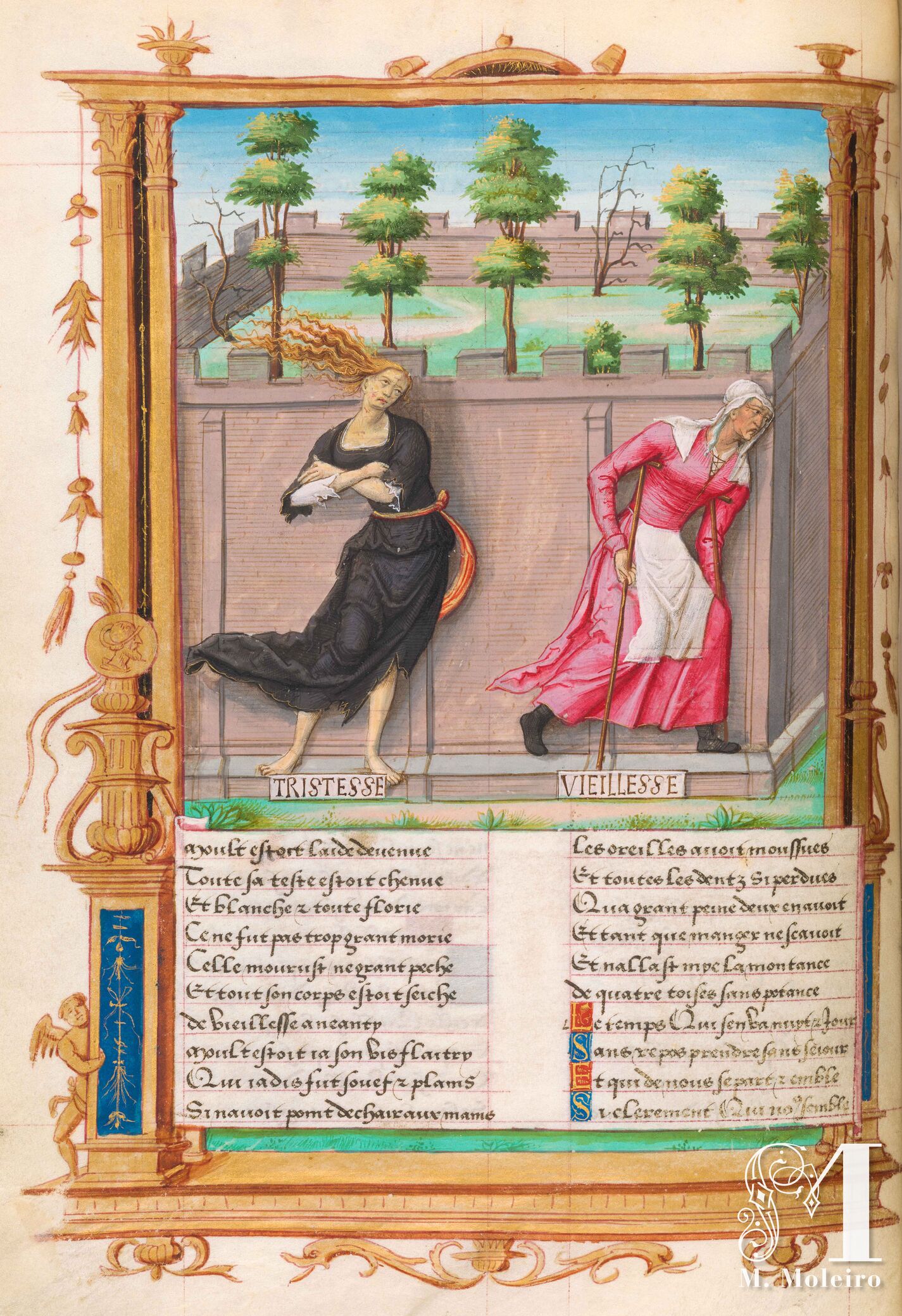The image describes the figure of "Tristesse" (Sorrow), caught in a strong gust of wind that causes her long wavy hair and the edges of her black dress to flutter. Her body bends in an "S" shape, and her head turns in the opposite direction to the right, showing a distressed and yellowish look due to the sorrow she has experienced.
Finally, the personification of "Vieillessse" (Old Age) is described, leaning on two crutches with a hunched back. Her face is wrinkled, and her red dress and white apron contrast with the dark figure of Tristesse.
The illustrator visually captures the emotions and characteristics described in the text, creating an allegorical image with significant details that reflect the nature of each figure.
NEXT was Old Age pictured there, | Her flesh, left her but skin and bone; |

The image describes the figure of "Tristesse" (Sorrow), caught in a strong gust of wind that causes her long wavy hair and the edges of her black dress to flutter. Her body bends in an "S" shape, and her head turns in the opposite direction to the right, showing a distressed and yellowish look due to the sorrow she has experienced.
Finally, the personification of "Vieillessse" (Old Age) is described, leaning on two crutches with a hunched back. Her face is wrinkled, and her red dress and white apron contrast with the dark figure of Tristesse.
The illustrator visually captures the emotions and characteristics described in the text, creating an allegorical image with significant details that reflect the nature of each figure.
NEXT was Old Age pictured there, | Her flesh, left her but skin and bone; |